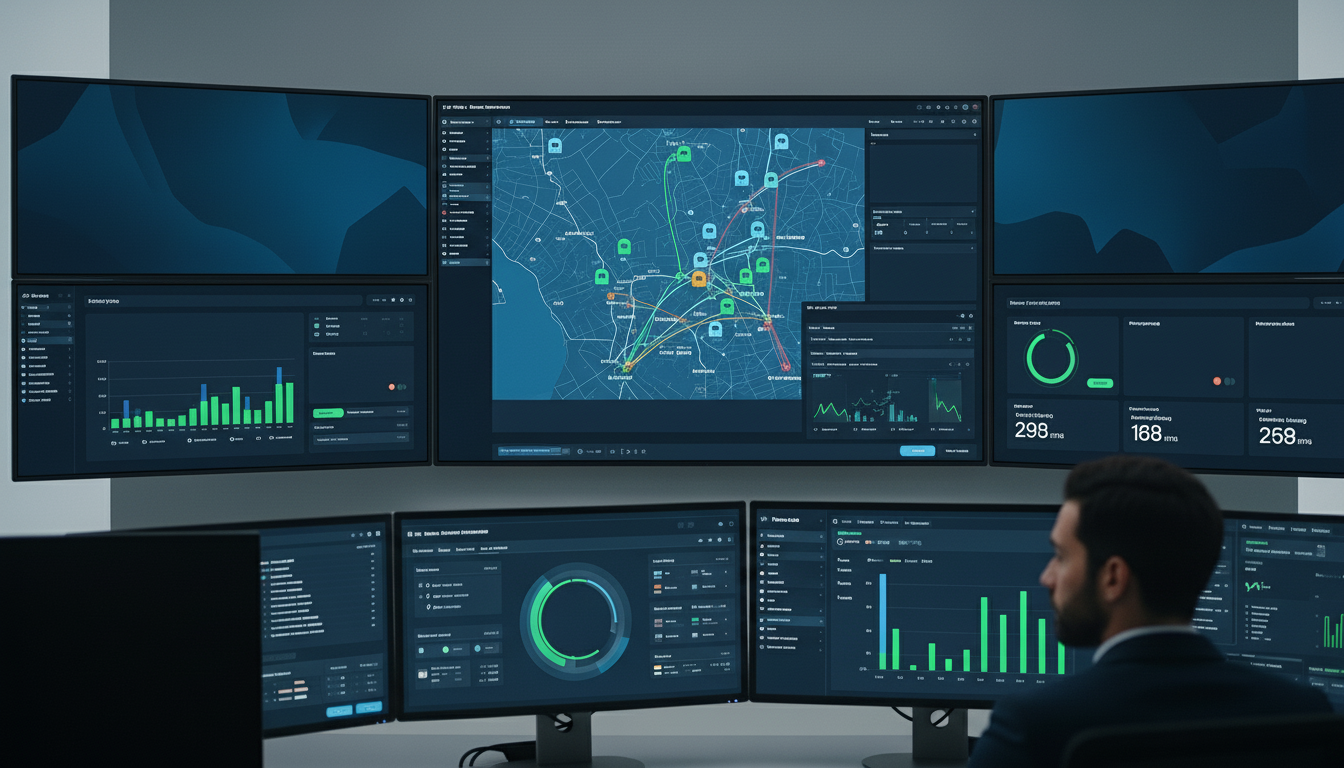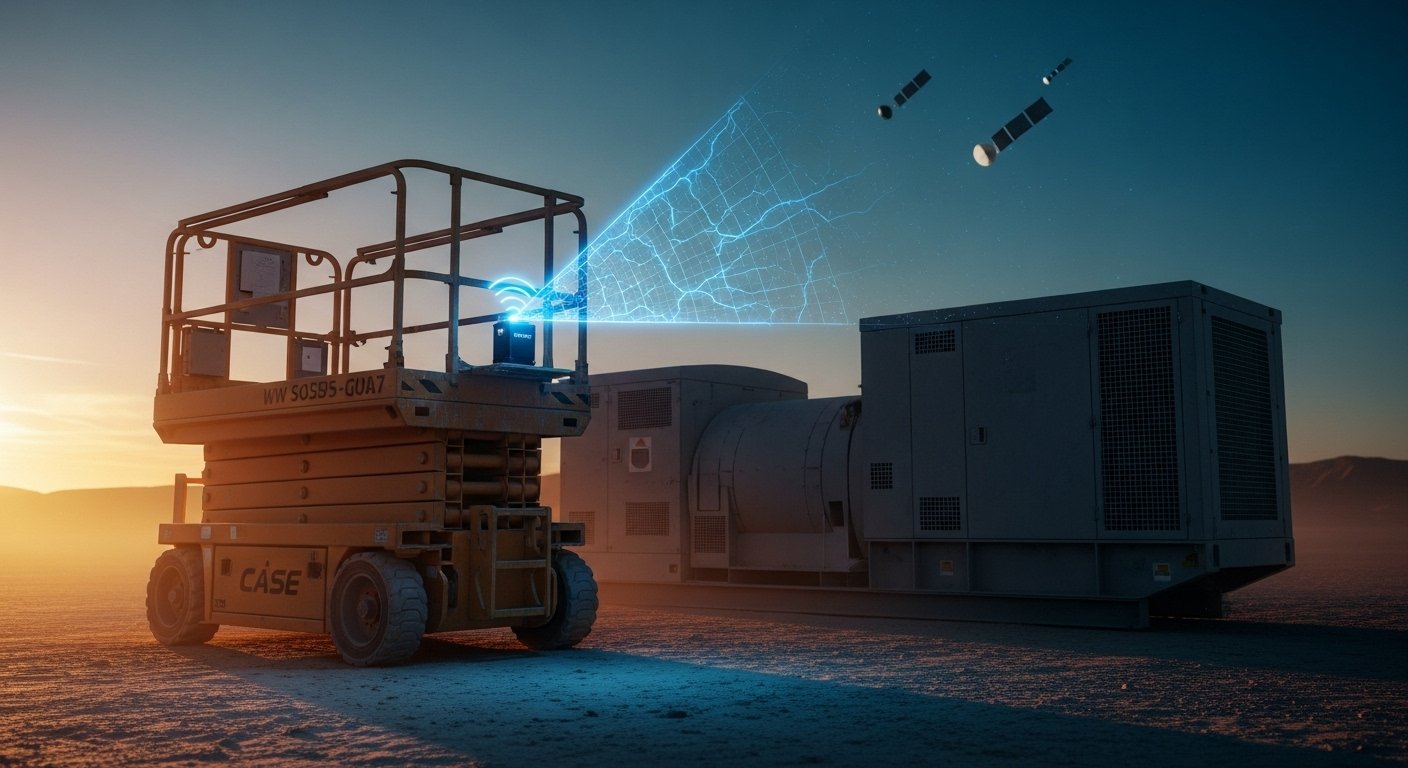Comprender el posicionamiento en tiempo real
El posicionamiento en tiempo real es una tecnología que permite la localización de objetos o individuos en tiempo real. Esta capacidad es esencial en varias industrias, particularmente en la construcción, donde la precisión y la coordinación son primordiales. El núcleo del posicionamiento en tiempo real se basa en tecnologías como el sistema de posicionamiento global (GPS), Identificación por radiofrecuencia (RFID), y estaciones totales, que trabajan juntos para proporcionar datos de ubicación precisos a los usuarios.
GPS es una de las tecnologías más utilizadas para el posicionamiento en tiempo real. Utiliza una red de satélites que se comunican con dispositivos de seguimiento de GPS para identificar la ubicación exacta de un objeto en la Tierra. En el contexto de la industria de la construcción, Un localizador GPS de maquinaria de construcción puede ayudar a rastrear equipos y vehículos pesados. Esto garantiza un uso óptimo de los recursos y mejora la gestión de la maquinaria de construcción al reducir el tiempo de inactividad y mejorar la eficiencia operativa.
La tecnología RFID funciona de manera diferente al GPS; Utiliza campos electromagnéticos para identificar automáticamente y rastrear etiquetas adjuntas a objetos, Proporcionar un medio de seguimiento de activos en tiempo real. En sitios de construcción, Las etiquetas RFID se pueden usar para monitorear materiales y herramientas, Asegurar que los activos críticos se tengan en cuenta y se utilicen de manera eficiente. Esto facilita una mejor planificación de ruta y envío de vehículos al permitir que los gerentes del proyecto visualicen la ubicación de los recursos al instante..
Otra tecnología significativa en el posicionamiento en tiempo real es la estación total, que combina teodolitos electrónicos y dispositivos de medición de distancia. Las estaciones totales proporcionan mediciones altamente precisas y pueden emplearse en encuestas de construcción para establecer puntos de referencia, Monitorear el progreso del proyecto, y garantizar el cumplimiento de las especificaciones de diseño. La integración de estas tecnologías en los sitios de construcción permite un monitoreo y coordinación remota mejorados entre los equipos, conduciendo a una mayor precisión y errores reducidos en la ejecución del proyecto.
Con avances en tecnologías de posicionamiento en tiempo real, Los proyectos se vuelven más simplificados, permitiendo a las empresas ahorrar tiempo y recursos. Al adoptar herramientas como Protrack GPS Tracker y la plataforma de seguimiento de ProTrack GPS, Las empresas de construcción pueden asegurarse de que tanto el equipo como el personal se contabilicen adecuadamente, que finalmente contribuye a una mayor eficiencia y éxito del proyecto.
Pilatear la gestión de proyectos con datos en tiempo real
La gestión efectiva de proyectos en el sector de la construcción depende en gran medida de datos oportunos y precisos, que se facilita cada vez más mediante el uso de Dispositivos de seguimiento del GPS. Estos dispositivos proporcionan esenciales Posicionamiento en tiempo real información, permitiendo que los gerentes de proyecto monitoreen maquinaria de construcción y activos continuamente. La integración de un Seguimiento de activos GPS El sistema asegura que los gerentes de proyectos puedan evaluar la ubicación y el estado del equipo en cualquier momento, Mejorar los procesos de toma de decisiones.
Uno de los principales beneficios de utilizar Localizadores de GPS de maquinaria de construcción es la capacidad de rastrear el progreso del proyecto de manera más efectiva. Los gerentes de proyecto pueden usar estos datos en tiempo real para asignar recursos de manera eficiente, Asegurar que la maquinaria adecuada esté disponible precisamente cuando sea necesario. Este nivel de visibilidad puede abordar preventamente los posibles demoras identificando cuellos de botella o recursos subutilizados, en última instancia, lo que lleva a una ejecución de proyectos más suave. Por ejemplo, Si un equipo pesado se retrasa en un sitio debido al mal uso o mal funcionamiento, Los gerentes pueden implementar rápidamente maquinaria alternativa de otro sitio de proyecto en lugar de enfrentar el tiempo de inactividad.
Además, la implementación de un robusto envío de vehículos sistema Plataforma de seguimiento del GPS de ProTrack ofrece una ventaja invaluable en la planificación de rutas y el monitoreo remoto. Este sistema puede analizar patrones de tráfico en tiempo real y condiciones del sitio, Permitir un enrutamiento óptimo que minimice los retrasos y maximiza la productividad. Las aplicaciones prácticas de esta tecnología son evidentes en varios estudios de casos en toda la industria de la construcción, donde las empresas han aprovechado con éxito la funcionalidad GPS para reducir los costos operativos y mejorar los plazos del proyecto.
La convergencia de Posicionamiento en tiempo real Capacidades con estrategias tradicionales de gestión de proyectos fomenta un entorno en el que los gerentes de construcción pueden tomar decisiones basadas en datos rápidamente. Este enfoque estratégico no solo mejora la eficiencia general del proyecto, sino que también aumenta la responsabilidad y la colaboración entre los equipos, Demostrando el papel fundamental de los avances tecnológicos en la transformación de las prácticas de gestión de proyectos dentro de la industria de la construcción.
Mejora de la colaboración entre los equipos de construcción
El posicionamiento en tiempo real se ha convertido en una piedra angular para fomentar la colaboración entre varios interesados en proyectos de construcción. Los datos de posicionamiento precisos facilitan la comunicación mejorada entre los arquitectos, ingenieros, contratistas, y subcontratistas, en última instancia, lo que lleva a flujos de trabajo más eficientes. La integración de los dispositivos de seguimiento de GPS en la gestión de maquinaria de construcción permite a los equipos identificar la ubicación exacta de los equipos y materiales, permitir que todas las partes operen con una mejor visibilidad.
En el entorno dinámico de la construcción, La capacidad de compartir datos instantáneamente es vital. Las soluciones tecnológicas que aprovechan las capacidades de seguimiento de activos GPS proporcionan una descripción completa de dónde se encuentran todos los recursos. Esto es particularmente beneficioso durante las fases de envío de vehículos y planificación de rutas., donde conocer la ubicación precisa de la maquinaria puede afectar drásticamente las líneas de tiempo y reducir los retrasos. Cuando los equipos tienen acceso a información en tiempo real, Pueden tomar decisiones informadas rápidamente, conduciendo a menos malentendidos y una mejor coordinación en el sitio.
El uso de una plataforma como la plataforma de seguimiento de ProTrack GPS mejora este enfoque de colaboración al permitir que varios interesados accedan a una base de datos centralizada de datos de posicionamiento. Este sistema optimiza la comunicación y admite monitoreo remoto, Asegurar que todos, desde gerentes de sitios hasta subcontratistas, esté en la misma página con respecto a las actividades en curso. A través de actualizaciones continuas en el estado del sitio y la utilización del equipo, Los equipos de construcción pueden colaborar fácilmente, ajustar sus estrategias según sea necesario para cumplir con los objetivos del proyecto.
Además, La integración del posicionamiento en tiempo real en las operaciones diarias fomenta una cultura de responsabilidad y transparencia dentro de los equipos. Haciendo que los datos sean fácilmente accesibles, Los profesionales de la construcción pueden coordinar mejor los esfuerzos, Asegurar que cada aspecto del proyecto se alinee con objetivos generales. Como consecuencia, Esto lleva a un entorno más cohesivo, minimizar el potencial de conflictos y permitir que los equipos trabajen de manera más efectiva juntos.
Tendencias futuras en el posicionamiento en tiempo real para la construcción
A medida que la industria de la construcción continúa evolucionando, La integración de la tecnología de posicionamiento en tiempo real está allanando el camino para mejorar la eficiencia y precisión del proyecto. Uno de los avances más significativos es la fusión de la inteligencia artificial. (AI) Y el Internet de las cosas (IoT) con dispositivos de seguimiento de GPS. Esta integración permite la recopilación de datos sin problemas, análisis, y gestión, Facilitar la toma de decisiones más inteligente. Los localizadores GPS de maquinaria de construcción equipados con capacidades de IoT pueden proporcionar actualizaciones en tiempo real sobre la ubicación y el estado del equipo, permitiendo que los gerentes de proyecto implementen recursos de manera más efectiva.
Con la creciente dependencia del seguimiento de activos GPS, La visión obtenida de estos datos es invaluable. Las empresas de construcción pueden aprovechar los algoritmos de IA para predecir las fallas de los equipos, optimizar el envío del vehículo, y mejorar la planificación de la ruta para la logística. Este enfoque de mantenimiento predictivo no solo maximiza el tiempo de actividad operativo, sino que también reduce los costos operativos, ya que el servicio oportuno de la maquinaria de construcción asegura que los proyectos permanezcan a tiempo..
Además, La demanda de soluciones de monitoreo remoto está en aumento. La tecnología de posicionamiento en tiempo real permite a las partes interesadas supervisar el progreso de múltiples proyectos desde cualquier parte del mundo. Esta capacidad mejora la comunicación entre los miembros del equipo y fomenta un entorno colaborativo, donde las decisiones basadas en datos conducen a flujos de trabajo optimizados y responsabilidad. La plataforma de seguimiento de ProTrack GPS Tracker y ProTrack GPS son ejemplos de herramientas diseñadas para respaldar este nivel de supervisión y gestión.
A pesar de estos avances, Hay desafíos que las empresas de construcción pueden enfrentar en la adopción de nuevas tecnologías.. La integración de la IA y el IoT con la infraestructura existente requiere inversión en capacitación y actualizaciones de sistemas. Además, La privacidad y la seguridad de los datos son preocupaciones primordiales que deben abordarse para proteger la información operativa confidencial. Abordar estos desafíos es crucial para maximizar los beneficios de la tecnología de posicionamiento en tiempo real en el sector de la construcción.



